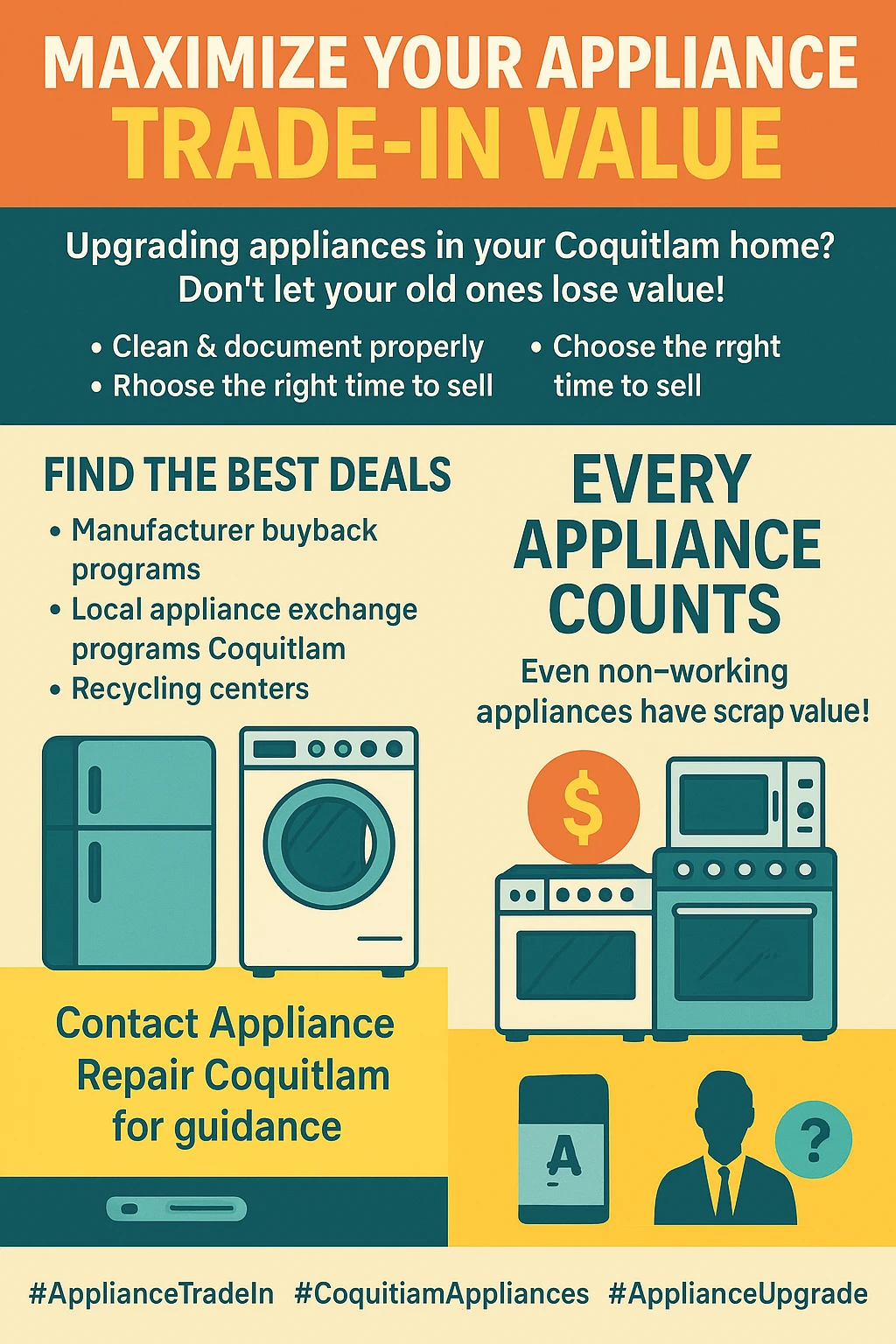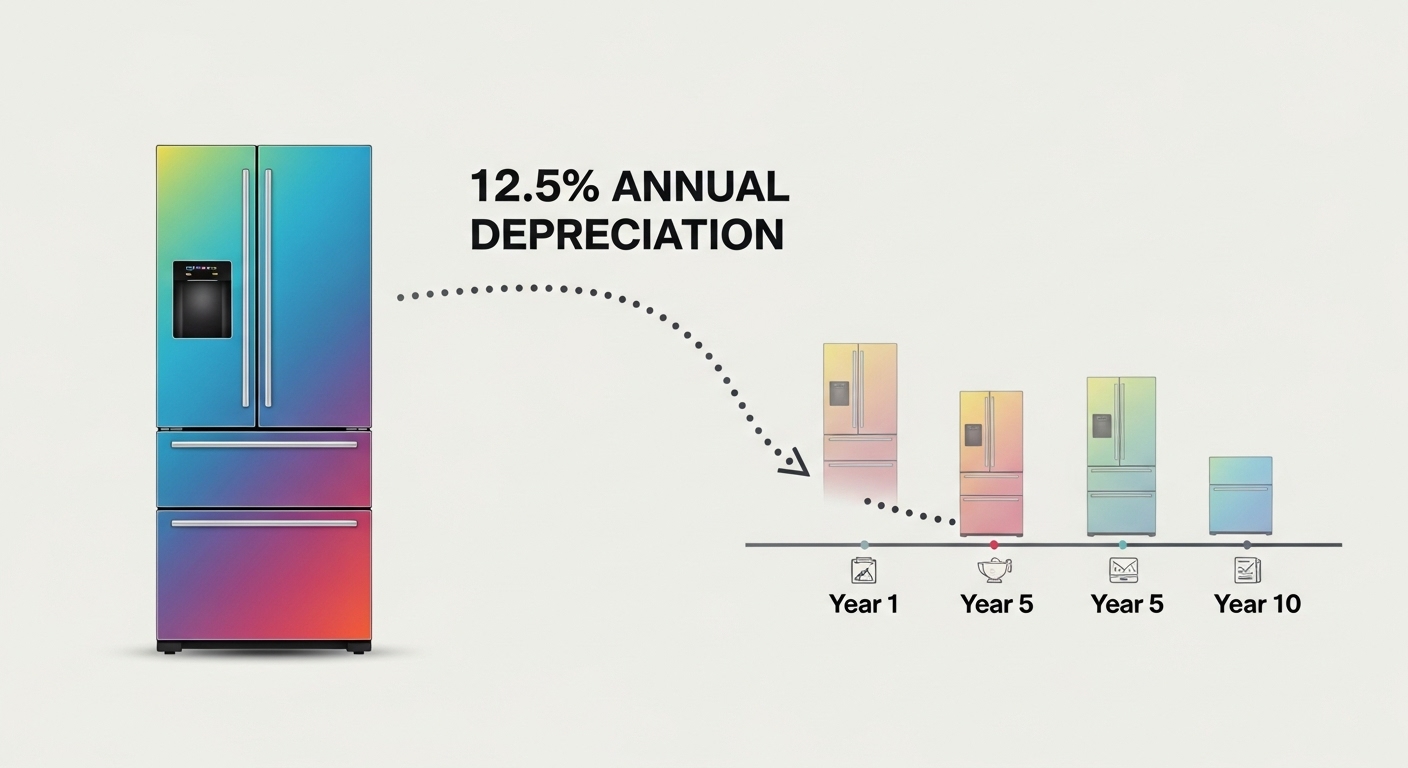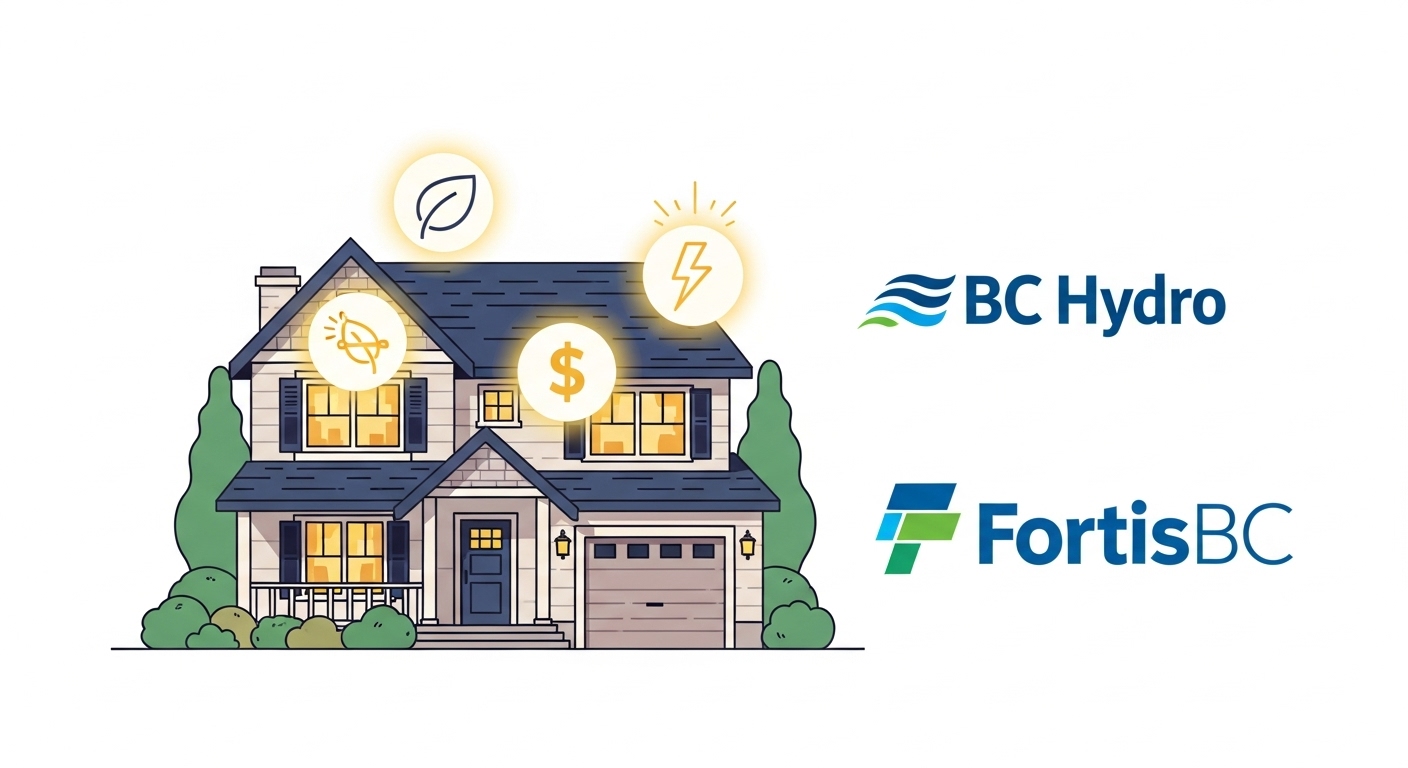Thinking about upgrading your Coquitlam home’s appliances but unsure how to squeeze every dollar from your old ones? Let’s dive into the insider secrets of appliance trade-in values, local rebate programs, and alternative disposal methods that could save you hundreds – or even thousands – on your next kitchen or laundry room makeover. My neighbor Sarah just discovered she could have gotten triple the value for her 8-year-old LG refrigerator if she’d known about the strategic timing windows and local programs available right here in Coquitlam. Don’t make the same mistake! Understanding appliance depreciation patterns and maximizing available incentives can transform what feels like a costly upgrade into a smart financial move. The secret lies in knowing when your appliances hit their sweet spot for trade-in value – before they plummet into the depreciation danger zone. The landscape of appliance trade-in opportunities has evolved dramatically in recent years, with manufacturers, utilities, and municipalities offering increasingly sophisticated programs designed to incentivize energy-efficient upgrades. Coquitlam residents specifically benefit from unique partnerships between local government and BC Hydro, creating opportunities that simply don’t exist in other communities. However, navigating these overlapping programs requires understanding their timing, eligibility requirements, and how to stack benefits for maximum return on investment.
Key Outtakes:
- Refrigerators depreciate at 12.5% annually while freezers lose only 5% of value per year, making timing crucial for trade-in decisions
- Coquitlam residents can access up to $100 BC Hydro rebates for ENERGY STAR washers plus $150 FortisBC maintenance rebates
- Professional repair becomes uneconomical when costs exceed 50% of appliance value, typically around the 7-10 year mark
- Scrap metal recycling provides immediate cash alternatives with copper reaching $3.55 per pound for old appliances
- Strategic timing during summer months and end-of-model-year sales maximizes both trade-in values and replacement incentives

Understanding Appliance Depreciation Patterns and Local Market Dynamics

The harsh reality of appliance ownership hits hardest when you discover how quickly your “investment” loses value. Refrigerators experience the steepest decline at 12.5% annually, while freezers depreciate at a more modest 5% per year. This dramatic difference means that five-year-old refrigerator you paid $2,000 for is now worth approximately $750 in trade-in value, while a comparable freezer retains $1,700 of its original worth. Understanding these patterns becomes absolutely critical for timing your upgrades strategically. First-year depreciation delivers the biggest financial blow, with most appliances losing approximately 50% of their original purchase price regardless of use or condition. It’s like driving a new car off the lot, except your dishwasher experiences this value crash the moment it’s installed in your kitchen. Subsequent years follow a more predictable pattern of 10% annual depreciation based on the original cost, not the current value. This mathematical reality explains why depreciation calculators consistently show steeper early-year losses that level off over time. Premium brands like Sub-Zero, Viking, and high-end LG models buck some depreciation trends by retaining value better than budget alternatives. The key lies in their reputation for longevity, superior build quality, and the prestige factor that maintains demand in the secondary market. Mainstream brands such as GE, Whirlpool, and Samsung occupy the sweet spot for trade-in programs because their widespread recognition creates steady resale demand while parts availability ensures ongoing serviceability during the appliance’s extended life cycle. Local market dynamics in Coquitlam create unique opportunities that don’t exist in smaller communities or rural areas. The active housing market drives consistent demand for quality used appliances, while the diverse population creates varying preferences for brands, styles, and features. Seasonal patterns mirror the broader housing market, with summer months typically seeing increased demand due to moving patterns and home renovations. This seasonal surge can boost trade-in values by 15-20% compared to winter months when demand drops significantly. The proximity to Vancouver’s metropolitan area expands both disposal and resale options beyond what’s available in isolated communities. Professional appliance removal services operate efficiently due to route density, while recycling programs benefit from economies of scale that make free services economically viable. These infrastructure advantages translate directly into better value recovery options for residents compared to communities where transport costs make many programs uneconomical.
Coquitlam Municipal Programs and BC Utility Incentives

Building on the foundation of market understanding, Coquitlam residents enjoy access to several targeted programs that can dramatically offset upgrade costs. The partnership between the City of Coquitlam and BC Hydro exemplifies this opportunity through their $100 rebate program for qualifying ENERGY STAR clothes washer purchases. This isn’t just a one-time promotional offer – it’s an ongoing partnership designed to promote energy efficiency while providing direct financial benefits to residents. The program requires purchasing and installing qualifying ENERGY STAR models, with annual funding creating opportunities for strategic timing of appliance purchases. The city’s Large Item Pick-Up program represents another valuable component of the value recovery equation, allowing residents with curbside collection services to dispose of up to four large household items annually. The program operates on a July 1 to June 30 cycle, providing predictable disposal opportunities that residents can plan around their upgrade schedules. Starting October 6, 2025, the program expands to include electronics, broadening the scope beyond traditional appliances to encompass the full spectrum of household technology upgrades. What makes this program particularly valuable is its integration with overall home improvement planning. Rather than paying removal fees to retailers or disposal services, residents can coordinate their upgrade timing to take advantage of these free municipal services. The program requires advance scheduling through Waste Connections of Canada, and each scheduled pickup counts against the annual limit regardless of whether residents miss their collection date. This encourages thoughtful planning and coordination with other aspects of home improvement projects. FortisBC’s comprehensive rebate structure adds another layer of financial support, offering up to $100 rebates for qualifying ENERGY STAR refrigerators and up to $150 for appliance maintenance services performed by licensed gas contractors. These maintenance rebates create an interesting strategic option for appliances approaching the repair-versus-replace decision point. Professional maintenance can extend appliance life while residents monitor trade-in opportunities and rebate availability, optimizing timing for maximum value recovery. Income-qualified customers access significantly enhanced rebate amounts through FortisBC programs, with natural gas water heater rebates reaching up to $3,000 and comprehensive home efficiency improvements supporting rebates up to $7,500 for windows and doors. These enhanced programs recognize that energy efficiency improvements often require larger upfront investments that create barriers for lower-income households. The tiered rebate structure ensures that efficiency improvements remain accessible across different economic circumstances while supporting broader community sustainability goals.
Manufacturer Trade-In Programs and Their Strategic Limitations

Moving beyond municipal and utility programs, manufacturer trade-in offerings present both opportunities and significant limitations that require careful evaluation. LG’s trade-in program illustrates typical manufacturer approaches by providing up to $150 in instant savings when trading old appliances, but the program structure reveals important constraints that affect practical value. The trade-in option must be selected during the checkout process for new appliance purchases, and professional haul-away services are included with delivery, creating a seemingly convenient package. However, the “up to” language in promotional materials frequently results in actual trade-in values significantly below advertised maximums. The $150 maximum applies only to specific combinations of trade-in items and new purchase categories, with most common scenarios yielding substantially lower values. The program accepts both LG and off-brand appliances, but savings become void if qualifying items are removed from shopping carts or orders are cancelled, creating potential complications for consumers who need time to finalize purchasing decisions. Local retailers like Electra Appliance Gallery operate trade-in programs with more flexible structures that better serve consumer needs. Their approach requires customers to submit pictures and model numbers for evaluation, but representatives provide competitive offers through multiple communication channels including phone, chat, and text messaging. This personalized service allows for more nuanced evaluation criteria that consider factors beyond the binary “working/not working” assessments typical of manufacturer programs. The fundamental limitation of most manufacturer programs lies in their structure as purchase incentives rather than genuine cash-for-appliances transactions. Programs typically require simultaneous new appliance purchases, offer store credit instead of cash, and include restrictive terms that limit consumer flexibility. This structure serves manufacturers’ sales objectives but may not align with consumers’ optimal replacement timing or budget constraints. The requirement to purchase new appliances immediately eliminates